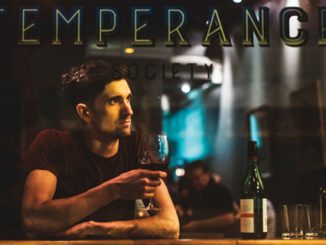
International Women’s Day 1974 heralded the opening of Australia’s first women’s community health centre. The Leichhardt Women’s Community Health Centre’s doors are still open. Here are some of the stories of the women who made it possible.
NOLA COOPER
Early activist
At the Women’s Commission, women got up and talked about some of the terrible experiences they had trying to get abortions and having to go to backyard abortionists.
I remember when it finished on the Sunday afternoon none of us wanted to move away, everyone lingered in the foyer because we’d just experienced something so incredible. It almost felt like it separated us off from the rest of the world and people outside wouldn’t have known what had happened inside.
After the Women’s Commission, a group of around 15 women– who would eventually set up [the Leichhardt facility] – decided abortion was the biggest issue to come out of the meeting. With campaigns already running to legalise it, the group decided to do something more practical, and found a group of doctors willing to perform affordable terminations.
LYNDALL RYAN
Early activist
There was quite a high demand and we were not convinced that the abortion services that did exist were entirely reliable. We realised it wasn’t just about abortion but women were contacting us about a whole lot of reproductive issues. In around 1973, I met the Federal Health Minister or one of his staff in Canberra who suggested we put in a submission for a women’s community health centre to the Hospitals and Health Services Commission. It had been newly formed under the Whitlam Government to try and break away from the big hospital system to community models, so that was where the idea was forged.
I got help from an academic who was an economist and someone who was actually on the Hospital Commission. Strangely enough, we got a lot of support from state and federal bureaucrats, they really wanted this thing to go ahead. It was obviously a sign of the times, it was 1973, there were new moves about providing new kinds of health services, and we arrived exactly at the right time.
GLORIA GARTON
Early activist
Since the Whitlam Government was elected they seemed to be throwing money around and they had a women’s adviser for the first time, so we decided we should apply for funding. None of us had the faintest idea how to go about it but someone who had worked in government helped us write the submission.
We just thought we’d done what we could but when we got a letter telling us we’d got the money, we didn’t know what to do! We chose Leichhardt because it was a big migrant area.
BEVERLEY GARLICK
Architect, early activist
We had a core group of around six women who would come every night after work and on weekends to get it done. I started teaching women how to use hammers and nails, which most hadn’t ever done. We built furniture and partitions and put up blinds and did up the back shed as a meeting room.
At the official opening we had a lot of publicity and it was chock-a-block with feminist groups and doctors and lots of men who were really supportive too. It was certainly the talk of the town. It was extraordinary because we never believed we’d ever get the money. Some people were against what we were doing, but we also got amazing support from the medical profession and doctors and nurses.
DR STEFANIA SIEDLECKY
Early doctor
I set up the first abortion clinic at Leichhardt. We did abortions one or two days a week and I’d see 8-10 women a day.
Wealthy women could get abortions because they could go to their own doctor and have an operation that they would just say was a curette, but it was hugely expensive, around $400-$500 which was out of the reach of most women at the time.
You would often read stories in the paper about a woman’s body being found in a paddock or laneway who had died after a backyard abortion. I saw a lot of women who had backyard abortions, as often as every week, who were still bleeding and needed to be admitted and fixed up. There were a few deaths for sure and a lot of them were quite sick.
We also provided counselling before and after the abortions, which was really essential, but we copped a lot of flak. There was a well-known female doctor who didn’t believe in women having abortions and talked to the media a lot, and Right to Life protested outside the centre a few times.
MARGO MOORE
Early activist
For me, it was one of the most exciting and fulfilling periods of my life because I was putting my political and social beliefs into action. There was no limitation to what we thought we could do.
I think challenging the notion of the sickness model to an empowerment and prevention model was ground-breaking. It had a major influence over the years on GP training, and I worked with the College of General Practitioners on developing courses, so you’ve now got a whole heap of doctors – both male and female – who are excellent practitioners because of what we did. I think it really influenced everyone’s health for the better.
•Adapted from Leichhardt Women’s Community Health Centre’s Oral History. For the full story of Leichhardt Women’s history, go to: www.lwchc.org.au.
• LWCHC and Leichhardt Council are running a joint event for International Women’s Day on Wednesday March 9 at Pioneers Memorial Park at 5.30pm. RSVP: www.intwomensday.eventbrite.com.au
• Compiled by Sam Wills

